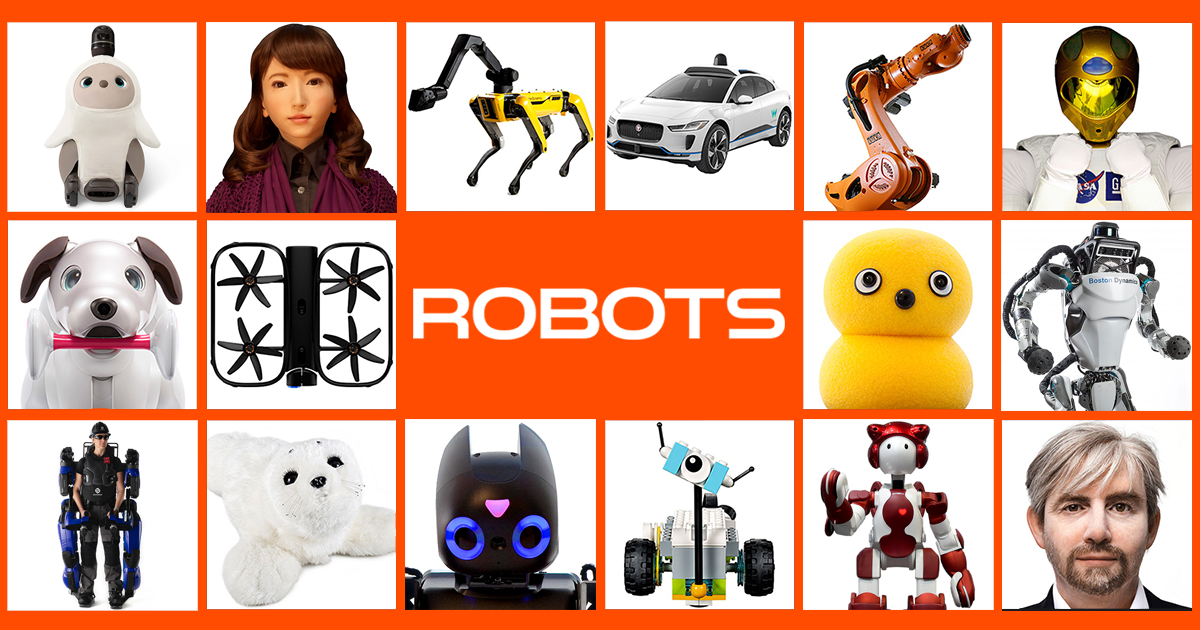Let's face it—naming a robot isn't as easy as naming your pet goldfish. You want something cool, futuristic, and memorable, but also meaningful. Whether you're building your own AI buddy or just brainstorming ideas for your next sci-fi project, good names for robots can make all the difference. So buckle up, because we're diving deep into this fascinating world of robot naming conventions, trends, and creativity.
Picture this: You’ve spent countless hours designing, coding, and testing your robot. It’s finally ready to roll—but what do you call it? A random string of numbers and letters? Nah, that's too boring. Or maybe something out of a '70s sci-fi movie like "Robo-1"? Nope, too old-school. The name you choose will define its identity, so it better be good. And that's where we come in.
Whether you're looking for a name that screams cutting-edge tech or one that's fun and quirky, this guide has got you covered. We'll explore everything from classic robot naming conventions to modern trends, along with tips on how to create a name that fits perfectly with your robot's purpose. Let’s get started!
Table of Contents:
- The Evolution of Robot Names
- Classic Robot Naming Conventions
- Modern Trends in Robot Naming
- Finding Inspiration for Your Robot's Name
- Categories of Good Names for Robots
- Tips for Creating a Memorable Robot Name
- Examples of Popular Robot Names
- Robot Names Across Different Industries
- What to Avoid When Naming Your Robot
- Final Thoughts: Naming Your Perfect Robot
The Evolution of Robot Names
Let’s rewind for a sec. Robots have been around in literature and science fiction since the early 1900s, but their names have evolved over time. Back in the day, robots were often named after their creators or given clunky monikers like "Mechanical Man." Fast forward to today, and we've got names like "Sophia" from Hanson Robotics or "Pepper" by SoftBank—robots that sound almost human.
But why does the name matter so much? Well, it’s not just about aesthetics. A well-chosen name can convey a robot's function, personality, and even brand identity. For example, "Boston Dynamics" gave their famous quadruped robot the name "Spot," which is short, catchy, and reflects its agility. Makes sense, right?
From Sci-Fi to Reality
When robots first appeared in movies and books, they often had names that sounded alien or mechanical, like "R2-D2" or "HAL 9000." These names became iconic because they matched the era’s vision of futuristic technology. As robotics advanced, though, the trend shifted toward more human-like names. This change reflects society’s growing comfort with integrating robots into everyday life.
Classic Robot Naming Conventions
There’s a method to the madness when it comes to traditional robot naming. Most of these conventions revolve around simplicity, clarity, and sometimes even a touch of mystery. Here are some classic approaches:
- Acronyms: Think about "ASIMO" (Advanced Step in Innovative Mobility) by Honda. Acronyms give a sense of technical sophistication without being overly complicated.
- Numbers and Letters: Combining numbers and letters is another go-to strategy. Names like "RX-78" or "T-800" evoke a sense of precision and engineering excellence.
- Human-Inspired Names: Some robots, especially those designed for social interaction, have names that sound like people. Examples include "Jibo" and "Bina48," which blur the line between machine and human.
These conventions aren't set in stone, but they provide a solid foundation for creating a name that resonates with both engineers and end users.
Modern Trends in Robot Naming
Nowadays, robot names are all about personality and purpose. Companies are moving away from sterile, technical names and embracing ones that feel approachable and relatable. Here are a few trends shaping the current landscape:
1. Minimalist Names
Short, punchy names are in vogue. Take "Cozmo," a toy robot by Anki, or "Misty," a programmable robot by Misty Robotics. These names are easy to remember and fun to say.
2. Nature-Inspired Names
Using elements of nature in robot names adds a warm, organic feel. For instance, "Bumblebee" (yes, like the Transformers character) or "AquaBot" for underwater drones. This trend taps into our natural connection with the environment.
3. Cultural References
Some companies draw inspiration from mythology, history, or pop culture. Names like "Atlas" (after the Greek god) or "Echo" (Amazon’s voice assistant) resonate with audiences because they carry symbolic meaning.
Finding Inspiration for Your Robot's Name
So, you’ve decided to name your robot. Where do you start? Inspiration can come from anywhere—from your favorite book to the coffee you drank this morning. Here are a few ideas to spark your creativity:
- Think About Function: What does your robot do? If it’s a cleaning robot, maybe go with something like "DustBot" or "CleanWave."
- Consider Personality: Does your robot have a playful demeanor or a serious, business-like attitude? Names like "Spark" or "Seraph" might fit depending on its personality.
- Look to History: Famous inventors, scientists, or historical figures can inspire great names. Imagine naming your robot "Ada" after Ada Lovelace or "Tesla" after Nikola Tesla.
Remember, the goal is to create a name that feels authentic to your robot’s purpose and personality. Don’t be afraid to think outside the box!
Categories of Good Names for Robots
Robot names can be grouped into categories based on their style and intent. Here’s a breakdown of the most common types:
1. Futuristic Names
These names scream "advanced technology" and often incorporate sci-fi elements. Examples include "Quantum," "Nebula," and "Eclipse."
2. Playful Names
Perfect for robots designed for entertainment or education. Think "Zippy," "Buddy," or "Pixel."
3. Professional Names
For robots used in industries like healthcare or finance, professional-sounding names work best. Try "MediScan" or "FinBot."
4. Unique Names
Sometimes, the best names are the ones that stand out. Names like "Quark" or "Orion" have a distinct flair that makes them unforgettable.
Tips for Creating a Memorable Robot Name
Creating a memorable name isn’t rocket science (though naming a robot kind of is). Here are some tips to help you craft the perfect moniker:
- Keep It Simple: Avoid overly complex names that are hard to pronounce or spell.
- Make It Relevant: Tie the name to your robot’s function or industry.
- Be Creative: Don’t shy away from wordplay or unique combinations.
- Test It Out: Run your name by friends, family, or colleagues to see if it resonates.
Remember, the right name can elevate your robot from a cool gadget to a beloved companion—or even a global sensation.
Examples of Popular Robot Names
To give you a better idea, here are some real-world examples of awesome robot names:
- Sophia: A humanoid robot developed by Hanson Robotics, known for its lifelike expressions and AI capabilities.
- Pepper: A social robot by SoftBank, designed to assist in retail and customer service.
- Spot: Boston Dynamics’ quadruped robot, famous for its agility and versatility.
- Roomba: iRobot’s iconic vacuum cleaner robot, loved by millions of households worldwide.
Each of these names reflects the robot’s function, design, and brand identity. They’re memorable, meaningful, and just plain cool.
Robot Names Across Different Industries
Different industries require different naming strategies. Here’s a quick look at how robot names vary across sectors:
1. Healthcare
In healthcare, robots often have names that convey trust and reliability. Think "Vici" (a surgical robot) or "Tug" (an autonomous hospital transport robot).
2. Manufacturing
Manufacturing robots tend to have names that highlight efficiency and precision. Examples include "YuMi" (ABB Robotics) and "IRB" series robots.
3. Consumer Electronics
Consumer robots lean toward fun, approachable names. "Alexa" and "Google Assistant" are great examples of names that feel both modern and friendly.
What to Avoid When Naming Your Robot
While creativity is key, there are a few pitfalls to watch out for:
- Overly Complex Names: If no one can pronounce or spell your robot’s name, it won’t stick.
- Generic Names: Avoid names that don’t say anything about your robot’s purpose or personality.
- Trademark Issues: Always check if your chosen name is already trademarked to avoid legal headaches.
By steering clear of these mistakes, you’ll ensure your robot’s name is as unique and impressive as the robot itself.
Final Thoughts: Naming Your Perfect Robot
Naming a robot is more than just picking a label—it’s about creating an identity. Whether you’re aiming for something futuristic, playful, or professional, the right name can make all the difference. By following the tips and trends outlined in this guide, you’ll be well on your way to finding the perfect name for your mechanical companion.
So, what’s your robot’s name going to be? Share your ideas in the comments below, or check out our other articles for more inspiration. Happy naming!


